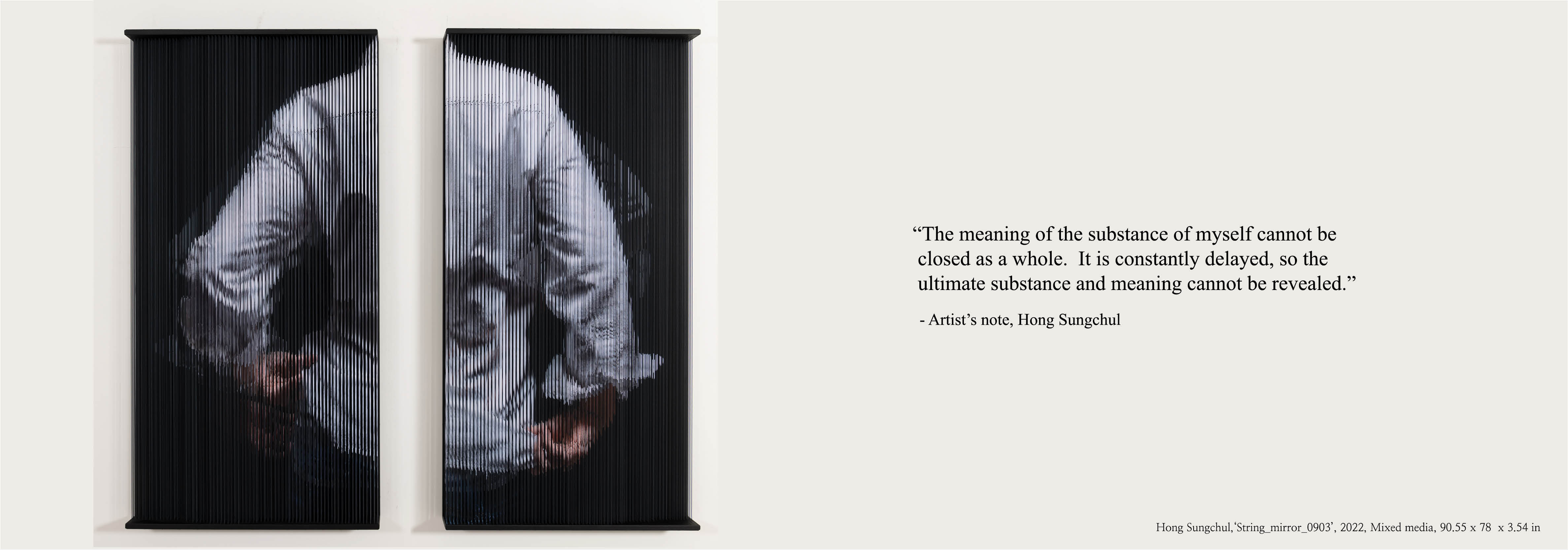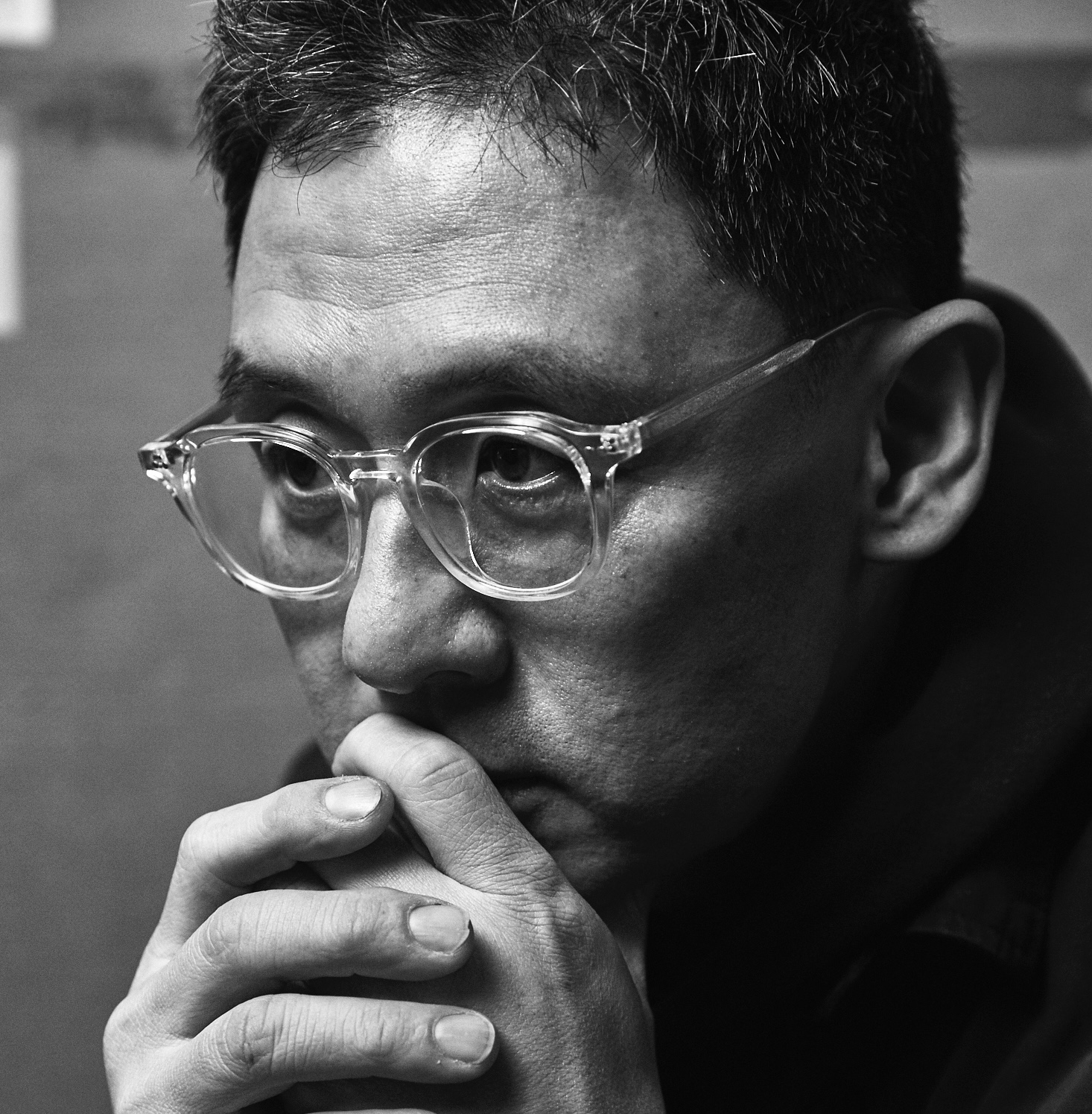Hong Sungchul has closely watched ‘anxiety’ in the underlying ground of human life, which was resulted from innate incompleteness. He regards this anxiety one of living conditions as well as a traction engine for our dynamic life. His keen interest in anxiety was expressed generally and consistently through various media and shapes such as strings, images, performances and recent LCD unit works.
He took a picture of parts or whole human body, printed it out on strings. Then, he reconstructed layers of strings on different levels. That is, He transformed one-dimensional images on the photo into stereoscopic figures. In the era of high technology, rapid development and spread of visual media diminished the power of ‘the one and only’ originality. It also realized, so-called, ‘Democracy of images’ and ushered the era of ‘more realistic than reality’ imagination. In this context, He tried to reveal incompleteness of media which distort the reality and reduce the reality to an object of imagination, by creating string works which depict the fact of its own.
However, He did not realize the image in a complete shape, instead left some room for people to interact with his works and finish them, by showing the image on loose layers of strings. By doing so, when people see the body image on his string works, they need to interact to fill the rest part of unfinished works. As a result, people who face his work need to move their body as if they dance in order to figure out the image on the strings. This activity has its root in men’s willing to finish their job. Those interactions engaged in his works are the same as reconstructing the blurry images. They are noteworthy in that those activities show an eager for an order that incomplete human beings have.
Both of threads in the past his Installation arts and strings in the current works consist of one pillar of his artwork. Another pillar is LCD unit works he recently started. Small LCD units on his works are incessantly going on and off, reacting sensitively to amounts of light. Important here is not that he adopted high-tech media to his works, but that he created reflection on him by adopting the media.
Casual and unintentional rhythms of LCD units, in itself, are our existential condition of human life which are full of absolute incompleteness. However, ironically, people would not feel anxiety in the face of irregular reflections of light on his works. Rather, they would feel hope or warmness. It is in the same context that we see death a fiesta for a fresh start, not the end of life. At this point, the media in the works finally abandon its cold mechanic features and become new comfortable tools which bring into new life. In this regard, unlike the first impression, his works have a significant depth of narrative structures.
In addition to this, “Mirrors”– the title of his string or LCD unit works provides people with an important access to his works. A close look on these aspects will give people an understanding that he tried to look inside of his and other people in his works and he did not pursue the simple visual amusement.

















